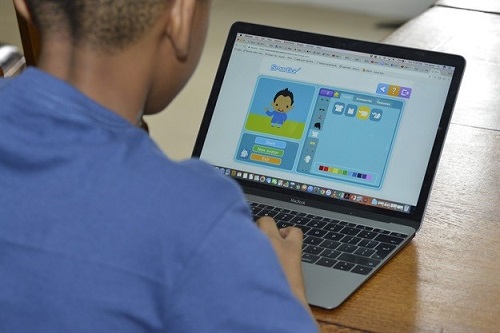
The new information communication
technologies and the increasing use of portable devices such as iPhones, iPads,
Tablets and a variety of other smart devices areforging new ways of learning
and has creatednew opportunities for transnational and borderless education.
One of the innovative learning systems brought about with the advent of the information revolution is electronic learning (popularly referred to as e-Learning). This deals with the delivery of a learning, training or education programme by electronic means involving the use of a computer or electronic device to provide training, educational or learning material. It emphasizes on the delivery of a learning, training or education programme by electronic means. Generally, it includes the delivery of content via Internet, intranet/extranet (LAN/WAN), audio and videotape, satellite broadcasts, interactive TV, and CD-ROM.
E-learning is used as a supplement to face-to face instruction, in a mixed mode with face-to-face instruction, or used on its own. In some places, it has replaced the century’s old model of teaching and learning, which focuses on an instructor standing in front of a classroom lecturing to students. This model no longer fits the way people want to learn today, because of the changing technological world in which we live. With rapid advances in technology and Internet tools, the traditional model is fading away to accommodate today’s learners.
Knight uses the term “cross-border education” to refer to the movement of people, programmes, providers, knowledge, ideas, projects and services across national boundaries.
The Council of Europe and UNESCO defines transnational education as “ all types of higher education study programmes, or sets of courses of study, or educational services( including those of distance education) in which the learners are located in a country different from the one where the awarding institution is based”.
Borderless education has been used to refer to the blurring of conceptual, disciplinary and geographic borders traditionally inherent to higher education.
Yoni Ryan in “The Business of Borderless Education and Lifelong Learning published in 2000 defines ‘borderless education’ to encompass a wide range of activities, from online training, off-shore campuses, technology-assisted teaching, and franchising of curricula.
In recent years new forms of internationalization have arisen other than student and academic staff mobility. Different terms are in use for these new forms of internationalization and somehow different interpretations of the terms exist, especially the use of the term cross-border is causing some confusion; according to the Observatory on Borderless Higher Education:
The new information and communication technologies have now become powerful carriers of an expanded educational system that makes it possible for people in physically unconnected places to be linked to global educational resources.
Due to the near limitless possibilities offered by the new communication tools, new pedagogical techniques are being employed in the classroom of today. For example, Khan Academy has placed several video lectures online; the flipped classroom model which allows students to watch lecture videos at home and come to class only to ask and answer questions has been employed by a number of academic institutions at both secondary and tertiary level. A free software called Socrativehas been developed to aid teachers interested in using these classroom models. Socrative enables students to answer questions on their smartphones, and the responses transmitted to teachers instantaneously on their smartphone or tablet.
Open Educational Resources (OER) (including open textbooks), Open Access to education, and online educationhave all gained traction as significant drivers of education innovation.E–learning is becoming core to the learning environment of today’s top institutions of higher learning. In the US alone, in 2006, 3.5 million students were participating in on-line learning at institutions of higher education.Research suggests that in 2009, 44 percent of post-secondary students in the USA were taking some or all of their courses online, and projected that this figure would rise to 81 percent by 2014.
Many of the great universities of the World– Yale, Princeton, MIT, The Indira
While some programmes require students to attend some campus classes or orientations, many are delivered completely online. In addition, several universities offer online student support services, such as online advising and registration, e-counseling, and online textbook purchase.
Today, e-learning is moving rapidly from the margins to being a predominant form of post-secondary education. This is now the global trend.
Over the years, we’ve witnessed the growth of private provision in education. Good examples are the role being played by organizations such as the Apollo Group, Pearson and Microsoft in establishing campuses, purchasing exiting foreign institutions, developing content and the supply of back- office services, and marketing distance education overseas. Experts predict that private education will inevitably make up much of the provision in countries with ambitious enrolment targets because of the speed of growth needed. Most Asian countries (e.g., Malaysia, India. South Korea) and a number of African countries (e.g., Ghana, Nigeria, Kenya, etc.) have seen a growth in private provision in education.
Consistent with the growth of private provision in education, the year 2011 saw the emergence of what has now become known as Massive Open Online Courses (MOOCs), a model for delivering learning content online to any person who wants to take a course, with no limit on attendance. MOOCs are delivered online, in virtually all fields offered to people from around the world.MOOC courses are free or “open” and most of MOOC courses are being offered by some of the most prestigious of universities in the world.
There is the need to capitalize on these new educational trends to help build educational capacity around the world.
Nana ProfessorOseiDarkwa, President
African Virtual Campus





